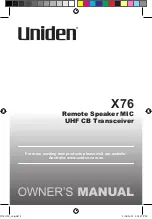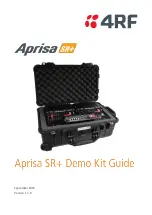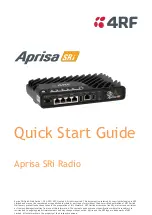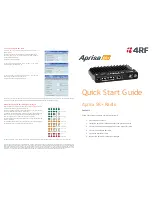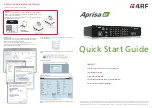
Company Confidential
30
Raveon Technologies Corp.
10. Technical Information
10.1. Device Addressing
Addressing Basics
One of the more powerful aspects of the
RF-7800W
transponder is its addressing
scheme. Addressing allows multiple radio systems on the same frequency to co-
exist, and not interfere with each other. Addressing is used to differentiate one
RF-7800W Transponder from another. Each unit has a unique number, so that
when a position report is received, the
RF-7800W
that sent the message is known.
It is not a security measure. Use the Security KEY to protect messages from being
intercepted. Use the addressing to identify individual
RF-7800W
transponders.
Note: The underlying digital technology is a 16-bit address, and thus the valid
address range is 0000
– FFFF in hex. Because the
RF-7800W
TDMA channel
access method uses the decimal version of the ID to determine slot number, digits
0-9 are valid, but A-F should not be used.
This addressing scheme allows up to FFFF
RF-7800W
transponders to be on one
radio channel, or split-up into sub-groups so they do not interfere with each other
1
.
For example, one group could use IDs 1200-1299 and another group use IDs
1300-
1399. When properly configured, the two groups will not receive each other’s
signals.
A way to disable addressing altogether is set the Address Mask to 0000 (
ATMK
0000 command). This tells the RF-7800W to ignore the address, and receive every
transmission.
For a unit to receive a message from another unit, all of the following conditions
must exist:
The bits in the TOID of the sending unit must match the bits in the MYID of the receiving unit
that are designated in the address mask.
If encryption is used, the KEYPHRASE of both units must match.
Broadcast Transmissions
The double FF is used to identify a broadcast packet. A transmission with a two
digit FF in the first two positions of the destination ID, or in the last two positions of
the destination ID, will be interpreted as a broadcast, and any modem with an ID
that matches the two non-FF digits will receive the data. For example, sending
data with a destination ID of 12FF will be received by any modem with a unit ID
1
Tech Note: The addresses are actually 0000-FFFF hex, allowing 64K addresses, but the TDMA
transmission used in the M9 interprets them as decimal numbers, and ignores HEX characters.





























